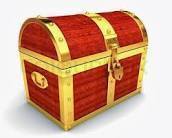Liberia (inglês)

Here is a comprehensive financial historical report on Liberia, in International English, based on the provided information:
Financial Historical Report of Liberia
Basic Data
-
Country ISO Code: LR
-
Official Language: English
-
Language ISO Code: en
-
Current Official Currency: Liberian Dollar
-
Currency ISO Code: LRD
Currency History in Liberia
1. First Liberian Dollar (1847–1907)
-
Liberia introduced its first national currency, the Liberian dollar, in 1847, shortly after declaring independence.
-
The Liberian dollar was pegged at par to the United States dollar and circulated alongside the US dollar.
-
Coins issued included copper 1 and 2 cents in 1847 and 1862, and a full coinage of 1, 2, 10, 25, and 50 cents was introduced in 1896. The last coin issues were in 1906.
-
Banknotes were issued between 1857 and 1880 in denominations of 10 and 50 cents, and 1, 2, 3, 5, and 10 dollars.
-
In 1907, Liberia adopted the British West African pound, pegged to sterling, replacing the Liberian dollar.
2. British West African Pound Period (1907–1943)
-
The British West African pound circulated as legal tender in Liberia, alongside US and British coins, reflecting regional monetary arrangements.
3. Reintroduction of the Liberian Dollar (1943–Present)
-
In 1943, with financial assistance from the United States government, Liberia reintroduced the Liberian dollar, pegged at par to the US dollar.
-
The Liberian dollar circulated alongside the US dollar, which remains legal tender in Liberia today.
-
The Central Bank of Liberia, established in October 1999, is responsible for issuing and maintaining the Liberian dollar.
Details of the Current Currency
| Attribute | Description |
|---|---|
| ISO Code | LRD |
| Singular Name | dollar |
| Plural Name | dollars |
| Subdivision | 1 dollar = 100 cents |
| Common Coin Denominations | 5, 10, 25, 50 cents; 1 dollar coin |
| Common Banknote Denominations | 5, 10, 20, 50, 100 dollars |
| Issuer | Central Bank of Liberia |
| Symbols Used | $, L$, or LD$ |
Designs and Symbols
-
Banknotes feature portraits of Liberian historical figures, scenes of the country’s culture and nature, and national symbols.
-
Coins and banknotes include modern security features to prevent counterfeiting.
-
The currency symbol is often represented as L$ to distinguish it from the US dollar.
Economic and Monetary Context
-
Liberia’s economy has faced significant challenges, including a prolonged civil war (1989–2003) that severely disrupted infrastructure and economic activity.
-
The Liberian dollar is not pegged to any currency but circulates alongside the US dollar, which is widely used for larger transactions.
-
Smaller transactions (under about 5 USD) are typically conducted in Liberian dollars; larger purchases often use US dollars.
-
The coexistence of the two currencies leads to mixed usage and occasional acceptance of both currencies as change.
-
The Central Bank of Liberia manages monetary policy and currency issuance amid ongoing economic recovery efforts.
Historical Notes and Collectible Issues
-
Liberia issued emergency banknotes during the civil war period, which are now of interest to collectors.
-
The 1991 banknote series introduced modern designs and security features.
-
Early Liberian Treasury Notes from the 1860s are significant historical artifacts.
Current Status
-
The Liberian dollar is the official currency and circulates actively alongside the US dollar.
-
Both currencies are legal tender, with the US dollar dominant in high-value transactions.
-
The Central Bank of Liberia continues to issue banknotes and coins, maintaining the currency’s stability.
This report summarizes Liberia’s monetary history from its first dollar issuance in 1847, through colonial currency periods, to the modern Liberian dollar system, highlighting its coexistence with the US dollar and its role in the country’s economy.
If you want, I can prepare a translation of this report into Portuguese (Brazilian) or French.
- https://en.wikipedia.org/wiki/Liberian_dollar
- https://www.cbl.org.lr/general/currency
- https://www.investopedia.com/terms/l/lrd.asp
- https://americanhistory.si.edu/explore/exhibitions/value-money/online/new-acquisitions/liberian-currency
- https://www.elevatepay.co/currency-encyclopedia/lrd-liberian-dollar
- https://www.banknoteworld.com/banknotes/Banknotes-by-Country/Liberia-Currency/
- https://en.foronum.com/banknotes-catalog/liberia
- https://globalfinancialdata.com/liberia
- https://www.youtube.com/watch?v=W--9JGxCdNg
 Nilton Romani
Nilton Romani
